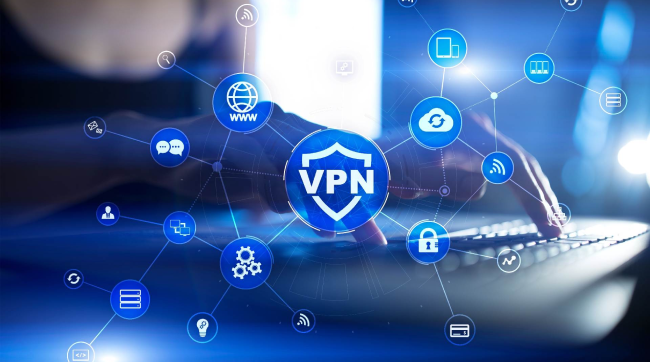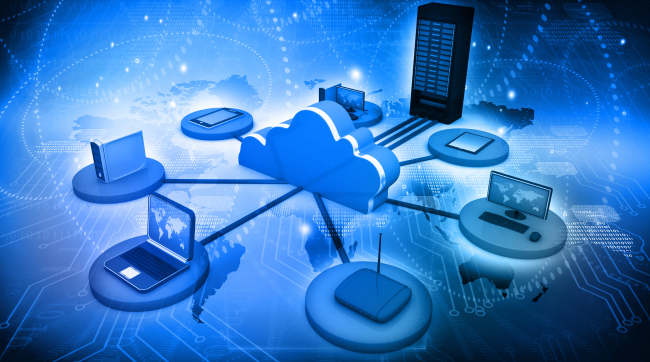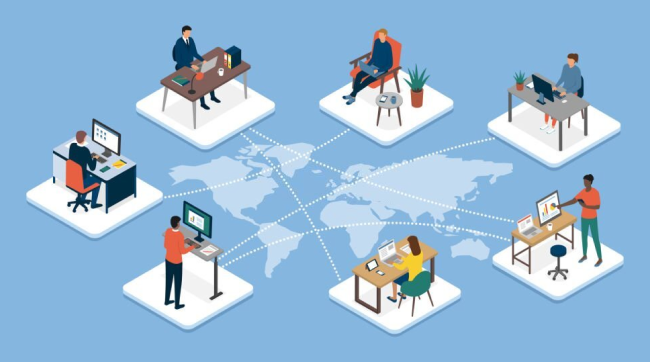Introduction:
In the not-so-distant past, the concept of remote work was met with skepticism, with businesses believing that true collaboration required physical presence. The thought of employees working from anywhere other than the office seemed unfathomable. However, the outbreak of the COVID-19 pandemic shattered these preconceived notions, forcing companies to embrace remote work environments swiftly.
Yet, a solid technical infrastructure is vital for remote work to thrive. This infrastructure ensures secure access to services and information, supporting employees regardless of location. Thanks to Managed IT Services Providers (MSPs) and advancing technology, companies can now effectively manage their tasks from the comfort of their homes.
This engaging article explores five key roles the right IT service provider can play to empower your remote workforce, revolutionizing collaboration and productivity.
Supercharge your remote work environment with LayerOne Networks. Experience unparalleled IT support solutions tailored to meet your needs.
What are Managed IT Services?
Managed IT services, or third-party IT support, are external resources businesses can depend on to manage their technical requirements. These services cover a range of tasks, including monitoring and maintaining computer networks, implementing data backup solutions, and providing assistance in case of a disaster.
By outsourcing these responsibilities to experienced service providers, businesses can optimize their internal resources, concentrating on strategic initiatives while ensuring their IT systems receive professional support, remain secure, and operate reliably.
5 Support Roles of Managed IT Services for Remote Work
Providing Network and Infrastructure Support
Managed IT services support remote work and foster collaboration by providing robust network and infrastructure support. Here are four key aspects where these services excel:
- Enabling Secure Access to Company Resources:
Managed IT services are vital in helping organizations establish secure networks, configure firewalls, and manage access control. They ensure that all systems are regularly updated with the latest security patches, minimizing vulnerabilities and safeguarding sensitive data. By actively monitoring networks, potential threats are identified and addressed promptly, ensuring secure remote access to company resources.
- Secure Connection with Virtual Private Networks (VPNs):

Virtual Private Networks (VPNs) are essential to manage IT services for remote work and collaboration. VPNs create a secure pathway for remote employees, allowing them to connect to a private network anywhere. With VPNs, employees can securely access company resources such as files, applications, and data. VPNs foster smooth collaboration among remote teams and external partners while safeguarding sensitive information from cyber threats. Additionally, VPNs enable secure connections between multiple offices, facilitating efficient collaboration across different locations.
- Efficient File Sharing and Collaboration with Cloud-Based Solutions:
Managed IT services leverage cloud-based solutions to ensure employees have the tools for seamless and productive remote work. Cloud-based file-sharing and collaboration platforms provide a secure environment for storing, sharing, and collaborating on documents, spreadsheets, presentations, and more. These solutions enable real-time updates, ensuring everyone works on the most current shared file version.
Moreover, cloud computing service providers offer the convenience of accessing files from anywhere with an internet connection, empowering remote teams to stay connected and productive.
- Reliable Internet Connectivity for Remote Workers:
Managed IT services also address the crucial need for reliable internet connectivity among remote workers. They ensure remote employees have sufficient bandwidth, speed, and dependable connectivity to support their work activities. By setting up secure VPNs and implementing robust network infrastructure solutions, managed IT services guarantee uninterrupted access to essential resources for remote workers.
Enhancing Cybersecurity for Remote Work
With the surge in remote working, ensuring data security has become an increasingly pressing challenge. However, with the help of managed IT support, companies can now enjoy enhanced cybersecurity in the remote work atmosphere. Let’s explore how these Cyber security services under managed services can bolster your company’s data security.
- Comprehensive Security Solutions:
Managed IT services offer robust security solutions tailored to address the unique risks of remote work. They leverage advanced tools and technologies to protect your data from phishing attacks, malware, and ransomware. By implementing strong security measures like firewalls and intrusion detection systems, managed IT services create a formidable defense against unauthorized access to your data.
- Secure Remote Access:
Remote work exposes businesses to vulnerabilities as employees access company resources from various locations and devices. Managed IT services ensure secure remote access by implementing rigorous authentication protocols, such as multi-factor authentication (MFA). MFA adds an extra layer of security by requiring users to provide multiple forms of identification, significantly reducing the risk of unauthorized access and data breaches.
- Ongoing Monitoring and Threat Detection:
By continuously monitoring networks, systems, and user activities, MSPs can identify suspicious or abnormal behavior that may indicate a cyber attack. Timely detection enables rapid response and mitigation, minimizing the impact of security incidents and safeguarding your company’s invaluable data.
- Employee Training and Best Practices:
Managed IT services also play a crucial role in educating and training your remote workforce on cybersecurity best practices. They offer guidance on recognizing and avoiding common cyber threats, such as phishing emails and malicious websites. By raising awareness and fostering a cybersecurity-conscious culture, managed IT services empower your employees to become the first line of defense against cyber attacks.
Your safety is our mission!
Call now for robust protection.
Effective Collaboration Tools
Managed IT services to support remote collaboration by providing access to essential video conferencing and communication tools. These tools bridge the distance between team members and facilitate seamless collaboration, regardless of their physical locations.
With the right suite of communication and collaboration tools, such as video conferencing, instant messaging, file sharing, and project management platforms, managed IT services empower teams to stay connected, share ideas, and work together efficiently.
Let’s delve into how these services benefit businesses in more detail.
- Seamless Connectivity:

Managed IT service providers (MSPs) ensure employees can access reliable video conferencing and communication tools, enabling smooth and uninterrupted remote collaboration. Reliable communication tools ensure team members can connect, communicate, and collaborate effectively, fostering productivity and synergy.
- Enhanced Collaboration:
MSPs offer a range of collaboration tools tailored to meet the specific needs of remote teams. These tools facilitate real-time communication, file sharing, and project management, enabling teams to work together efficiently and effectively, even when not physically present.
- Compatibility and Integration:
They ensure their collaboration tools are compatible with other platforms and systems used within the organization. This seamless integration eliminates the hassle of data loss or disruptions caused by incompatibility issues, enabling a streamlined workflow and enhancing productivity.
- Training and Support:
Managed services offer training and support to employees, ensuring they are proficient in using the collaboration tools effectively. Training and support empower team members to leverage the full potential of these tools and maximize their productivity in a remote work environment.
Data Backup and Disaster Recovery
Ensuring the safety and resilience of your valuable data is paramount in today’s ever-evolving digital landscape. Managed IT services are critical in fortifying your business against potential disasters by protecting your data and ensuring smooth operations.
- Reliable Data Protection:
With data backup and recovery services, your critical information is diligently backed up regularly. This meticulous process creates multiple layers of protection, safeguarding your data from unexpected events and ensuring its availability when needed.
- Off-Site Backup Storage:
Managed IT services go the extra mile by securely storing backup copies in off-site locations. Keeping your data in separate and secure facilities mitigates the risk of data loss due to physical damage or localized incidents. Should the need arise, your data can be quickly retrieved and restored to ensure minimal disruption to your business.
- Swift Recovery:
In the face of a disaster or system failure, time is of the essence. Managed IT services are well-prepared to quickly restore your systems and retrieve your critical data. Their expert technicians work diligently to minimize downtime and get your business back up and running quickly.
- Uninterrupted Operations:

By relying on managed IT services for data backup and disaster recovery, you can maintain uninterrupted operations, even during challenging times. Whether your team works remotely or in the office, you can rest assured that your data remains secure and accessible. This insurance allows your business to continue functioning smoothly and your employees to stay productive, no matter the circumstances.
Helpdesk Support
Managed IT services offer invaluable help desk support to remote employees, ensuring they have the necessary technical assistance to remain productive and connected. With help desk support, remote employees can rely on expert guidance and troubleshooting to resolve technical issues. Support includes addressing device-related problems, resolving software glitches, and configuring settings to optimize their workflow. The dedicated support provided by managed IT services enables remote employees to overcome technical hurdles efficiently, allowing them to focus on their work without disruptions.
In addition to troubleshooting and technical assistance, managed IT services extend their support by providing training and resources to empower remote employees. Through various channels, such as online tutorials, webinars, and personalized support, employees gain the knowledge and skills to effectively utilize collaboration tools, access files remotely, and maintain seamless communication with their team.
Can Remote Work Options Benefit Your Business?
The answer to this question is a resounding yes!
Managed IT services providers have revolutionized how companies operate, showing that employees can be just as productive and thrive outside the traditional office setting. Remote work has sparked a shift in employee preferences, with many actively seeking opportunities that offer remote or hybrid work environments.
As an employer, failing to provide this option can lead to missed opportunities in attracting and retaining top talent. By embracing remote work, your business gains a competitive edge. You tap into a pool of highly skilled professionals who value flexibility and work-life balance. These positives increase job satisfaction and productivity, ultimately driving better business outcomes.
LayerOne Networks managed IT services providers in Corpus Christi understand the importance of supporting remote work environments. And that’s why we offer comprehensive IT services tailored to remote teams’ unique needs. With our expertise, you can confidently propel your remote work atmosphere in the right direction.
Ready to unlock the potential of remote work for your business growth? Discover our comprehensive IT services and unleash your team’s full potential.
Contact us today to explore the possibilities.





